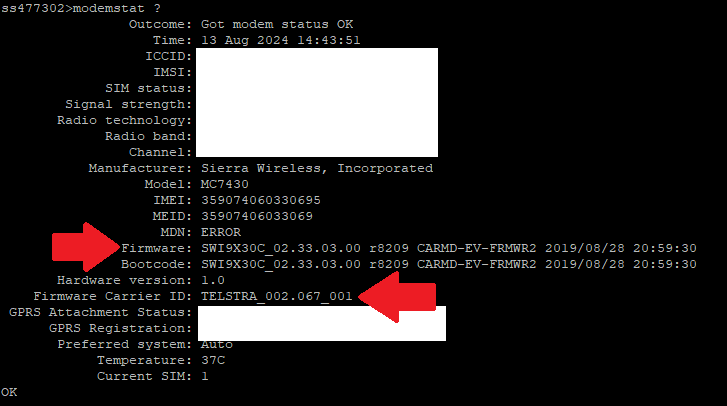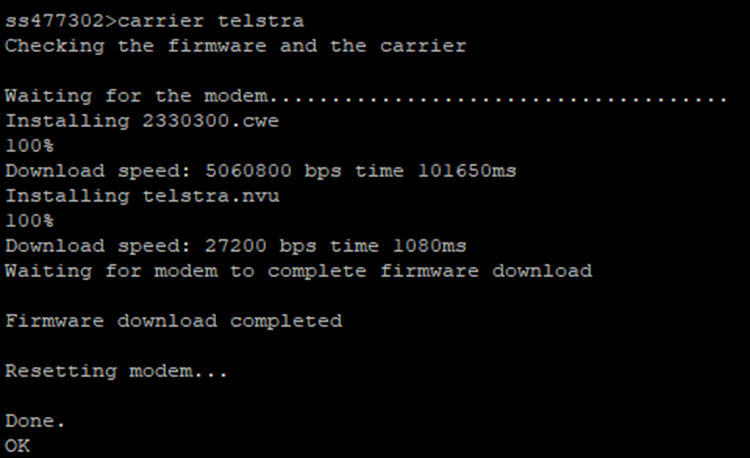Telstra 3G Sunset 28th October 2024
Digi, in conjunction with distributor network, has worked with the world’s telecommunications carriers in assisting cellular consumers as the migration of cellular technologies has eventuated. With thousands of devices seemingly unaccounted for, Telstra had previously announced they will be extending shutting down their 3G network until the 28th October 2024 – see https://www.telstra.com.au/support/mobiles-devices/3g-closure.
The sunset of the 3G network will impact some 4G LTE devices unless action is taken to update affected devices. This situation could cause certain 4G LTE devices using voice-centric modems to stop working after the 3G network sunsets due to the combined 4G & 3G network used by Telstra. Digi has identified a list of modems and products likely affected as outlined below.
What Happens If I Do Not Update?
If the affected devices are not updated before carriers sunset their 3G networks in 2024, the devices may no longer be able to Register on the carrier network. If this happens, the SIM cards within the hardware will look like they are deactivated if the firmware update is not applied.
What You Need To Do and What Devices are Affected?
Digi has provided firmware updates for the affected devices to avoid any issues when the 3G network sunset occurs. Customers who have not yet acted are encouraged to update their devices as soon as they are able. A complete list of products with minimum required firmware versions to avoid connectivity issues are listed below:
SarOS Operating System devices
- Digi TransPort WR11
- Digi TransPort WR21
- Digi TransPort WR31
- Digi TransPort WR44
- ConnectPort X4 H
DAL Operating System devices
- Industrial Routers
- Digi IX10
- Digi IX14
- Digi IX15
- Digi IX30
- Digi CORE Radios
- Firmware Update Instructions
- Affected CORE radios:
- 1002-CMG4
- 1003-CM11
- 1002-CM16
- NOTE: The affected CORE radios can be used in multiple Digi products. The below list of products could be affected if using one of these CORE radios and would need a firmware upgrade:
- 6310-DX, 6330/6335-MX, 6350/6355-SR, 5400RM, IX20/IX20W, EX15/EX15W, AnywhereUSB 8 Plus, AnywhereUSB 24 Plus, Connect IT 4, Connect IT 16, Connect IT 48
- Firmware
- using 1002-CMG4 radio: Version 24.6.17.54 or newer
- using other CORE radios: Version 21.5.56.106 or newer
- XBee Industrial Gateway
Connectivity issues identified during other previous 3G Shutdowns
As stated, Digi has worked through 3G shutdowns of global carriers the likes of AT&T, Verizon, T-Mobile and Vodafone. Again, there can be a variety of factors in generational migration of cellular networks some of which could not be known in advance. However, below are several additional actions that should assist clients to prepare and correct for the 3G shutdown:
- Some WR31 and WR44 devices with Sierra Wireless MC7430 cellular modules may be using non-Telstra firmware. Being on the wrong modem firmware may cause connectivity issues identified during the Telstra 3G shutdown. Switching to Telstra firmware will resolve most connectivity issues. See instructions below on checking if the proper firmware is loaded and how to change the firmware if incorrect:
- SSH to the WR31/44 to gain command line access. If SSH is unavailable, you may also use the WebUI and navigate to Administration – Execute a command to run commands on the device.
- Issue the command modemstat ? to view the current firmware of the modem:

If the Firmware Carrier ID indicates “Telstra_002.067_001” and Firmware indicates “SWI9X30C_02.33.03.00” like the screenshot above, there is no need to proceed further. If it says “Generic” or and older version of Telstra firmware instead, you will want to change the firmware.
- Download these 3 files to your local PC:
- 2330330.cwe
- telstra.nvu
- car_7430.txt
- NOTE: For the “car_7430.txt” file, you may need to right-click and click “Save as..” to save the file, as your browser may open it as a text file by default.
- Transfer all 3 files above to the WR31/44’s local file system using an FTP program, such as FileZilla. The files should reside on the root (“/”) of file system.
- After the files are transferred, from your SSH/CLI session type: carrier telstra
The output of this command should look like the following if the upgrade is successful:

- Once the upgrade finishes, run modemstat ? again to validate the latest firmware is installed:

- If for any reason this process fails to upgrade the modem firmware, run the process a 2nd time. If it continues to fail, contact Digi’s Technical Support team at the link here and open a case.
- Devices running the DAL operating system may need the default IPv4/IPv6 dual-mode disabled for the cellular modem. If this is the case, enable the IPv4 only option if the SIM card does not provide both types of IP addresses. Refer to the product manual for your device on locating this option to disable it.
- The APN associated with the SIM card may not be setup as a proper LTE APN. Please contact your Telstra representative to review your data plan to ensure it is setup properly for LTE service.
- Digi devices evident today should be a combination 3G/4G products. In its configuration, it may be possible that the Digi device is locked to a 3G only mode. The device will need to be taken out of this mode to gain access to the 4G LTE network. Please refer to the manual for your specific product for WebUI and/or CLI commands to make this change.
- It is important to remember that 3G and 4G LTE communications use different sets of frequencies. In operation, peripheral devices such as antenna may be tuned to 3G and not 4G frequencies or could be wideband in covering both 3G and 4G. Further, the typical communication reach of 3G over 4G might be an area of consideration. Understandably, antenna should be checked for applicability to 4G frequencies and the Digi devices and equipment must be in communication range of the 4G signals. Please refer to this link on performing a site survey with a DAL based products.
- Should the site survey reveal a less than optimal signal, remedial actions could entail swapping out existing antenna for higher gain options or if practicable, moving the Digi device to be in range. Digi advises that corrective measures the likes of migrating antenna are contingent upon regulations of the Australian Communication and Media Authority and trained personnel should be consulted in taking a corrective course of action.
Finally, Digi and its partner organisations are not privy to all the machinations of configurations and basis of application. As such, this document's body is an attempt to help parties analyze risk and take corrective measures, but by nature, it cannot be exhaustive. If you are having connectivity issues, and the above steps are not correcting the problem, please contact Digi Technical Support for assistance. For more information and ongoing updates, please contact Telstra directly.
Last updated:
Oct 07, 2025